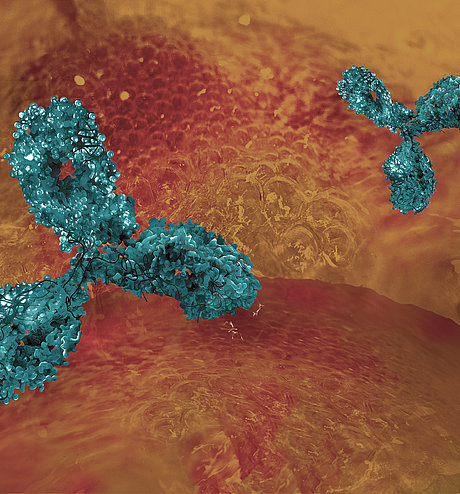Gfi1(1b/1b) and Gfi1(P2A/P2A) Mice
Ref.-No. 2960, 3947
The Snail/Gfi1 (SNAG) family of zinc finger proteins is a group of transcriptional repressors. Gfi1 is a transcriptional repressor being expressed in the hematopoietic and nervous system. Loss of function leads to severe defects in hematopoiesis and inner ear development.
Description
Gfi1(P2A/P2A): Deafness caused by defects of the hair cell formation in the inner ear, impaired erythroid and megakaryocytic hematopoiesis.
Gfi1(1b/1b): These mice do not exhibit significant defects in the hematopoietic system as the Gfi1(P2A/P2A)-mice do, suggesting that Gfi1b is in part able to rescue the loss of Gfi1-function.
Genetic Background
Gfi1(P2A/P2A): A point mutation has been inserted in the SNAG domain of the Gfi1 gene that replaces a proline at amino acid position 2 by alanine (P2A). This completely abrogates the activity of Gfi1 as transcriptional repressor.
Gfi1(1b/1b): Gfi1 is highly similar to its paralogue Gfi1b with almost identical sequences in their respective protein domains. A knock-in mouse model was created in which the Gfi1 coding region was replaced by Gfi1b.
Usage
Research, drug development
Reference
Fiolka, K., et al. (2006) Gfi1 and Gfi1b act equivalently in haematopoiesis, but have distinct, non-overlapping functions in inner ear development. EMBO Reports 7(3): 326-33.
Möröy, T. (2005) The zinc finger transcription factor Growth factor independence 1 (Gfi1). Int. J. Biochem. Cell Biol. 37: 541-6.
Wallis, D., et al. (2003) The zinc finger transcription factor Gfi1, implicated in lymphomagenesis, is required for inner ear hair cell differentiation and survival. Development 130: 221-32.
Saleque, S. et al. (2002) The zinc-finger proto-oncogene Gfi-1b is essential for development of the erythroid and megakaryocytic lineages. Genes Dev. 16: 301-6.


